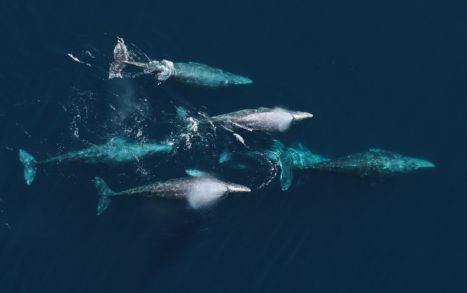
Did you know that gray whales cover the largest distance every year in order to migrate from Arctic to Mexican lagoons? If you did not have an idea of it, then this will be interesting to know that gray whales travel more than 10,000 miles back and forth during their yearly migration period. However, it is also interesting to know the reasons behind their long-distance migration. The seasonal movement of gray whales happens due to several different factors. However, a major factor guiding their migration is mating and giving birth to baby gray whales.
These mammals actually start migrating during their breeding or mating season. During the spring season, gray whales move toward cold waters so they could feed themselves well and grow fat. Afterward, they travel nonstop for a few months to move back to warm lagoons where they find it safe to stay and give birth to their young ones. Thus, they migrate back from a high-altitude area to a low-altitude area. It is usually during the early winter season that gray whales move toward shallow lagoons. Many of these lagoons are located along the Mexican coast.
There are some lagoons that are more famous as the breeding grounds for these gray whales. If you want to witness gray whales in large numbers, then you may find them around the Scammon’s, San Ignacio or Magdalena Bay lagoons. All these lagoons are located along the Pacific coast of Mexico. There are some younger whales that do not cover a very long distance while migrating. These gray whales usually cut down their travel distance. You may find them along midway coastlines stretching between the U.S. and Canada. Apart from this major reason, whales may also migrate due to factors, such as climate change, seawater temperature or salinity level changes, food availability, etc.